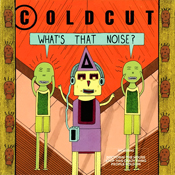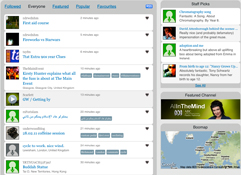
It is the early hours of Saturday morning. I'm somewhere in a cold, dark wood with a film crew. The Marantz has just died on me...
My hands are almost too cold to change the batteries in the recorder. The director, crew and cast are waiting to start the next take. I am beginning to doubt I will ever be warm again. Batteries changed. Camera rolling. Sound rolling. Slate!
Now, watch the levels and listen out for foxes, aircraft and all the other sounds found in a ‘silent’ location. Afterwards, I realise that what I had been listening out for is precisely what SoundMaps aim to document. I’ve found a new tool for location spotters…
SoundMaps are yet another byproduct of smartphones, allowing short ‘location recordings’ to be made and posted to a website that logs the recording and its location. In the UK, SoundMap posts have been made from as far north as the Shetland Isles (a good way off the north coast of Scotland) to Jersey (closer to the north coast of France than the south coast of the UK). And they cover everything from lunch at the Bull’s Head to the crowd at a Status Quo gig. Everything you might need to know if you want to pitch up with a film and sound crew...
What’s that noise?
 The UK SoundMap is operated by the British Library and runs in close conjunction with another website called Audioboom, which enables recordings to be made and posted to the internet as audio ‘tweets’. Some of these are used by the SoundMap, while others cover anything from interviews to personal musings. And they come from anyone, anywhere.
The UK SoundMap is operated by the British Library and runs in close conjunction with another website called Audioboom, which enables recordings to be made and posted to the internet as audio ‘tweets’. Some of these are used by the SoundMap, while others cover anything from interviews to personal musings. And they come from anyone, anywhere.
In British Library terms, its SoundMap tells us ‘what Britain sounds like’. Across the Atlantic, the NYSoundmap is run by The New York Society for Acoustic Ecology, a chapter of the American Society for Acoustic Ecology and ‘a membership organization dedicated to exploring the role of sound in natural habitats and human societies’.
Either way, the interpretation of the recordings that are posted is left to you and me.
Defining noise pollution as ‘unwanted or harmful noise’ makes sound entirely subjective. To my cold ears (not as cold as my hands) everything that was happening outside of a parked BMW stuffed with actors, camera, lights, mics and cigarette smoke was a potential pollutant.
SoundMaps are not built on ‘professional’ recordings made using ‘professional’ equipment. Instead, we are looking at another aspect of technology’s present-day determination to undermine traditional skill sets. Photography, publishing, music making, recording… even manufacturing (through 3D printing) is being reinvented. Everything short of cooking and brewing is fair game, it seems.
They call it democratisation – opening up access to equipment and processes that cost and complexity previously made exclusive. It is a term Fatboy Slim first threw my way in an interview sometime in the 1980s over the use of sampling, and which was readily echoed by the likes of Coldcut and MARRS. It offended old-school musicians then, just as mobile phone journalism offends many broadcasters now.
The voice of boo
 As ever, technology's advance generates some fascinating fallout. And helping legitimise Audioboo’s role in SoundMapping and beyond is the funding provided by UK broadcaster Channel 4, conforming to the part of its remit to ‘demonstrate innovation, experiment and creativity’. Fair enough.
As ever, technology's advance generates some fascinating fallout. And helping legitimise Audioboo’s role in SoundMapping and beyond is the funding provided by UK broadcaster Channel 4, conforming to the part of its remit to ‘demonstrate innovation, experiment and creativity’. Fair enough.
Audioboo was launched in 2009 and has enjoyed the attention of the media-savvy Guardian newspaper and actor/wit/technology addict/cultural warrior Stephen Fry, among others. Founder Mark Rock emerged as a rising star in the 2010 Guardian Media 100 (appearing at No.14), described as having delivered ‘the most important new media tool of the past two years’. ‘Innovation around audio and the web has all been about music,’ says Rock. ‘This is an experiment to connect people who create audio with people who listen to traditional radio.’
And in a boo interview posted by The Sound Agency’s Julian Treasure – who describes Audioboo as ‘people’s radio’ – Rock uncompromisingly agrees that Audioboo is attacking ‘one of the last artisan areas’. To Treasure, it is ‘creating thousands of radio reporters’. Both are correct. And it offers further evidence that technology is now doing the same for sound as it has done for the other skills that have attracted its attention.
‘Here’s a tool set and a platform – not just for journalists but for anyone’, Rock continues, describing the site and the ability to develop apps for iPhone and Google’s Android phone platform. 'It’s an attempt to make the spoken word more accessible in the internet.’ Part of his vision is for both marketing brands and common people to have their own audio broadcast channels as they have in other media and via other social networks.
The future applications that await the sharing of these audio documents – reportage, location atmos, found sounds, unusual acoustic spaces and new world maps – are just around the corner. And the people who can spot them will be directing the traffic. Now, about that location recording guide... what, exactly, do we need?






